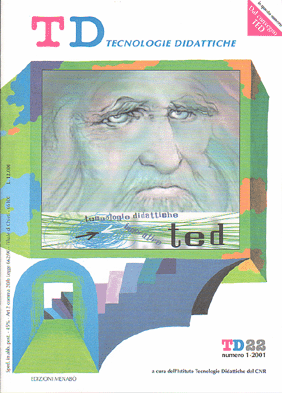The Future of the Past
Main Article Content
Abstract
Article Details
Authors who publish with this journal agree to the following terms:
- Authors retain copyright and grant the journal right of first publication with the work simultaneously licensed under a Creative Commons CC BY 4.0 Attribution 4.0 International License.
- Authors are able to enter into separate, additional contractual arrangements for the non-exclusive distribution of the journal's published version of the work (e.g., post it to an institutional repository or publish it in a book), with an acknowledgement of its initial publication in this journal.
- Authors are permitted and encouraged to post their work online (e.g., in institutional repositories or on their website) prior to and during the submission process, as it can lead to productive exchanges, as well as earlier and greater citation of published work (See The Effect of Open Access)
References
Bertagna C. (2000), Utilité et usages des nouvelles technologies pur les langues anciennes: qu’en est-il dans l’enseignement secondaire en France, in Cristofori A., Salvaterra C., Schmitzer U. (eds.), La Rete di Arachne - Arachnes Netz, Steiner, Stuttgart, pp. 31-38.
Charpin F. (1994) (ed.), La Pratique de l’informatique dans l’enseignement des langues anciennes, LITALA, Paris, vol. I.
Charpin F. (1995) (ed.), La Pratique de l’informatique dans l’enseignement des langues anciennes, LITALA, Paris, vol. II.
Charpin F. (1997), Nuove tecnologie: inventario degli strumenti per lo studio delle lingue classiche, L’uso dell’informatica nell’insegnamento delle lingue classiche, Associazione Italiana di Cultura Classica - Delegazione di Verona, pp. 15-26.
Conklin J. (1987), Hypertext: an Introduction and Survey, Iccc Computer, vol. 20, pp. 17-41.
Cristofori A. (1998), Con Internet attraverso le periferie del mondo antico, in Atti del convegno NIR-IT Didattica, Società, Cultura, Mercato: le nuove frontiere di Internet, pubblicati nel CD-ROM n° 10 allegato a _PC Interactive”, Giugno 1998; il contributo è disponibile in Rete all’indirizzo http://www.economia. unibo.it/dipartim/stoant/r assegna1/perif.html.
Landi L. (1997), Il laboratorio ipertestuale: didattica e tecnologia, L’uso dell’informatica nell’insegnamento delle lingue classiche, Associazione Italiana di Cultura Classica - Delegazione di Verona, pp. 47-54.
Landi L. (2000), Multimedialità e interattività nella didattica del Latino: esperienze nel Triennio del Liceo Classico, in Cristofori A., Salvaterra C., Schmitzer U. (eds.), La Rete di Arachne - Arachnes Netz, Steiner, Stuttgart, pp. 47-56.
Maragliano R. (1999), Nuovo manuale di didattica multimediale, Laterza, Roma - Bari.
Martucci Lanza A. (1997), L’esperienza di una creazione di ipertesto con la classe, L’uso dell’informatica nell’insegnamento delle lingue classiche, Associazione Italiana di Cultura Classica - Delegazione di Verona, pp. 27-46.
Neri C. (2000), Computer e Antichità Classica: note in margine, in Cristofori A., Salvaterra C., Schmitzer U. (eds.), La Rete di Arachne - Arachnes Netz, Steiner, Stuttgart, pp. 109-117.
Salvaterra C. (2000), Bytes loquuntur: nuove tecnologie e didattica delle scienze dell’Antichità: riflessioni su alcune esperienze, in Cristofori A., Salvaterra C., Schmitzer U. (eds.), La Rete di Arachne - Arachnes Netz, Steiner, Stuttgart, pp. 205-232.
Salvioni L. (2000), Software e Libertà. Il Corso di latino e greco col Computer nel Liceo Classico di San Donà di Piave, in Cristofori A., Salvaterra C., Schmitzer U. (eds.), La Rete di Arachne - Arachnes Netz, Steiner, Stuttgart, pp. 185-203.
Solli A. (1998), Hypertext ‘Papers’ on the Web: Students Confront the Linear Tradition?, Journal of the Association for History and Computing, vol. 1, 2.

